This is an archive post ~ originally published Jun. 18, 2013 and updated in 2018
I recently had a mastermind session with music therapist, coach & harpist Trista Hill about my online program Blues Harp-Style, a 6-Week program on the Blues specifically for harp players. The photos you see are from some sillier moments from the course, explaining the Blues structure through a song-and-dance called the “Mood Swing Blues.”
I told Trista I love seeing people sign up for the course – and I’m always looking for ways to make the Blues experience deeper and more experiential for them.
Then I divulged my fear: I love Blues as a creative structure – I love playing it and I love teaching it. But I’m no Blues ‘expert’ – not when it comes to knowing different styles of Blues or how to create an authentic this-or-that kind of riff, or who played what when and with whom.
I’m fascinated with Blues is a structure for creativity, not as a tradition to master.
And for some reason, that embarrasses me. Like I should be able to speak ‘knowledgably’ about Chicago Blues and how it differs from Whatever Blues. I should know the most famous Blues players and their most famous Blues tune.
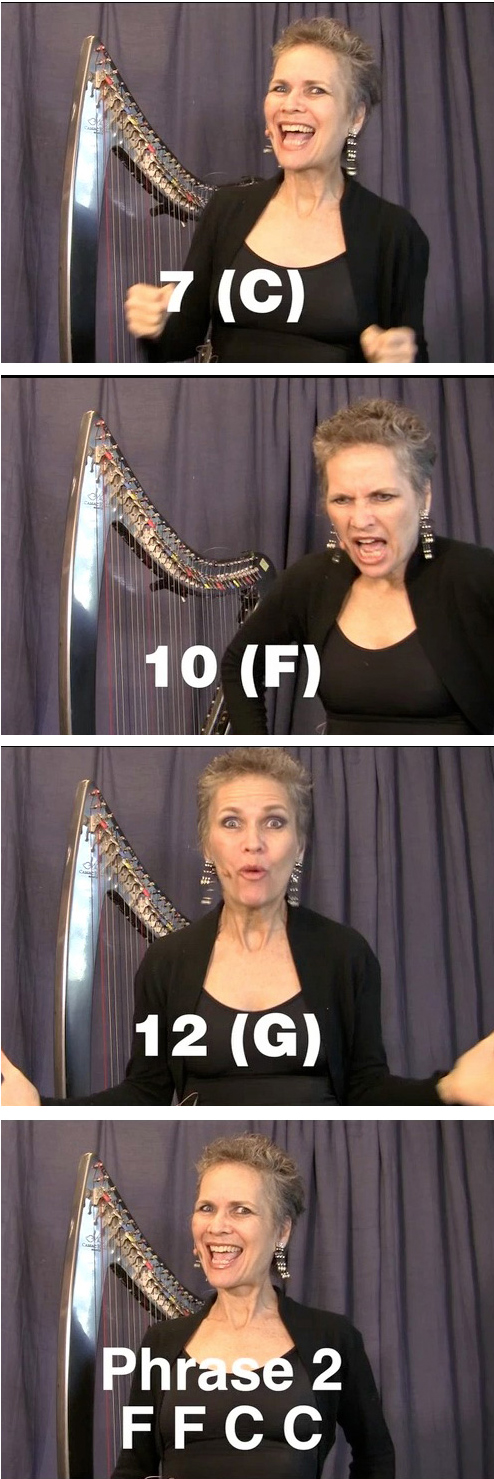
But I can’t. I don’t.
The minute I ‘saw’ the simplicity of the 12-Bar Blues form, I was hooked. The minute I realized that that one form could be played an infinite number of ways – from rudimentary to virtuosic – and that it gives the same generous offer of human expression at any level of technical ability – I knew the Blues was something I wanted in my own life.
I know almost nothing about Blues history – and I don’t teach it, in part because it’s all there on the internet – students don’t need me to teach that part. What I know is how Blues works as a structure for creative expression, I know how to distill the form to its structural essence, outside of specific tradition, history or convention – and that’s what allows me to combine it with any other style of music I play – from Debussy to Boogie Woogie.
I admire people who master Blues in traditional ways – I’m sure I’d be impressed by someone who knows the different kinds and histories of jungle-gyms, who was the greatest jungle-gym creator of all time, and what are the styles of jungle gyms.
But I’m not a traditionalist. Being able to play it right doesn’t float my boat. Being able to play with it, to experience everything the form opens for me – that’s what I love, and that’s what I teach in my program “Blues Harp-Style”.
So I approach Blues pretty much the way I approach everything:
How is this structured?
What are its principles?
How can I envision it in the simplest way possible, that lets me engage with it – and that lets me bring everthing I DO know to it.
What are all the things I can DO with it?
Let me get my hands on it and play with it.
This hasn’t changed for me since I was probably 3. It may be from growing up with both a mother and grandmother who were K-1-2-3 teachers, very busy women and who both often wanted me to go off and play by myself. Thus did I hear:
“Look, here’s how this works … see? OK, so now you know. Now, lets see how many different things you can do with it.”
As an adult, I gravitated towards teachers like that. My mentor, Tony Montanaro, would take a single object, like a clothespin and put it on the floor, with two dozen of us surrounding it. We’d spend an hour taking turns creating things with it in tiny mimes or stories, exploring everything that clothespin could be or represent.
I was taught to PLAY WITH everything.
I learned to look for these spectacularly simple structures that are cosmic gushers of creative expression.
The Blues is one of them. And that’s why I love to teach people to play it. I especially love teaching harp-players, people like me, who’ve often been told their instrument is limited and inappropriate for Blues or Jazz. By people who confuse tradition with truth.
I love that the Blues is simple enough that people can start expressing themselves as soon as they’ve got the basic concepts – pretty much after the second week of my online course.
It’s often in that raw, unformed place, when we’ve just had an ‘aha’ about how something works, that we experience a glorious moment in time when we’re simply exploring and expressing – something we often lose connection with when we start focusing on how to master something technically.
Mastery itself can be blinding. But that moment of understanding how a new thing works, the beauty and power of simple structures and what they offer you — those are some of my favorite moments in learning. And when I teach I am reconnected with them over and over.
If you play the harp, come join me for BLUES: Harp-Style 2018.
PROJECTS & PERFORMANCES:
FOR HARPISTS:
- Join Hip Harp Academy
- Harp Time Live (FREE Weekly Playalong)
- FREE Resources

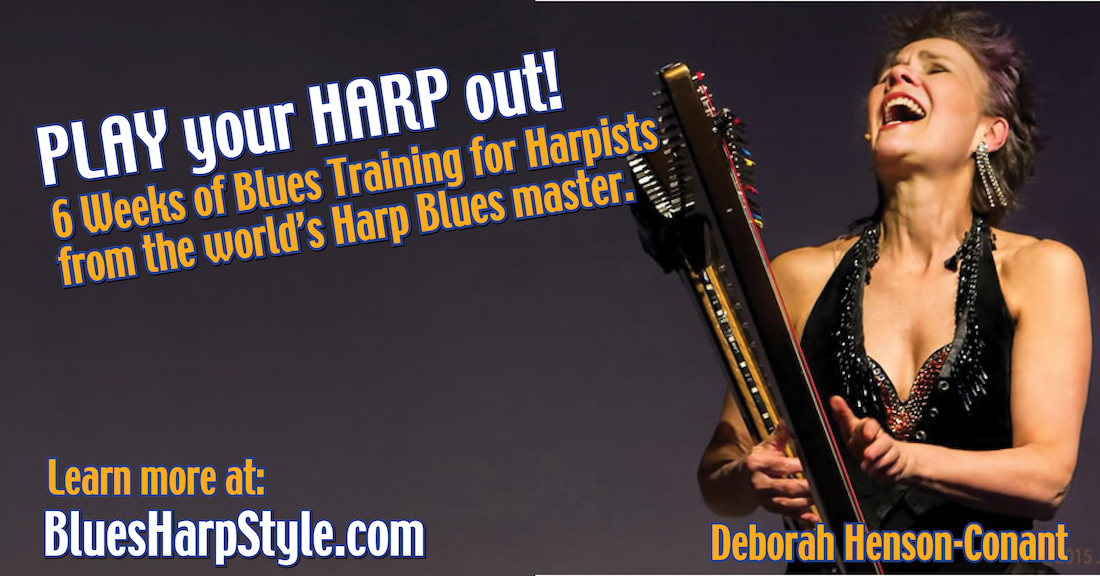
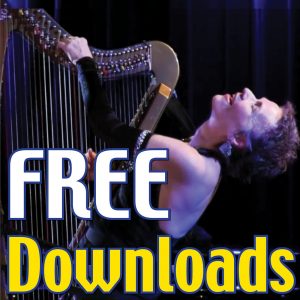
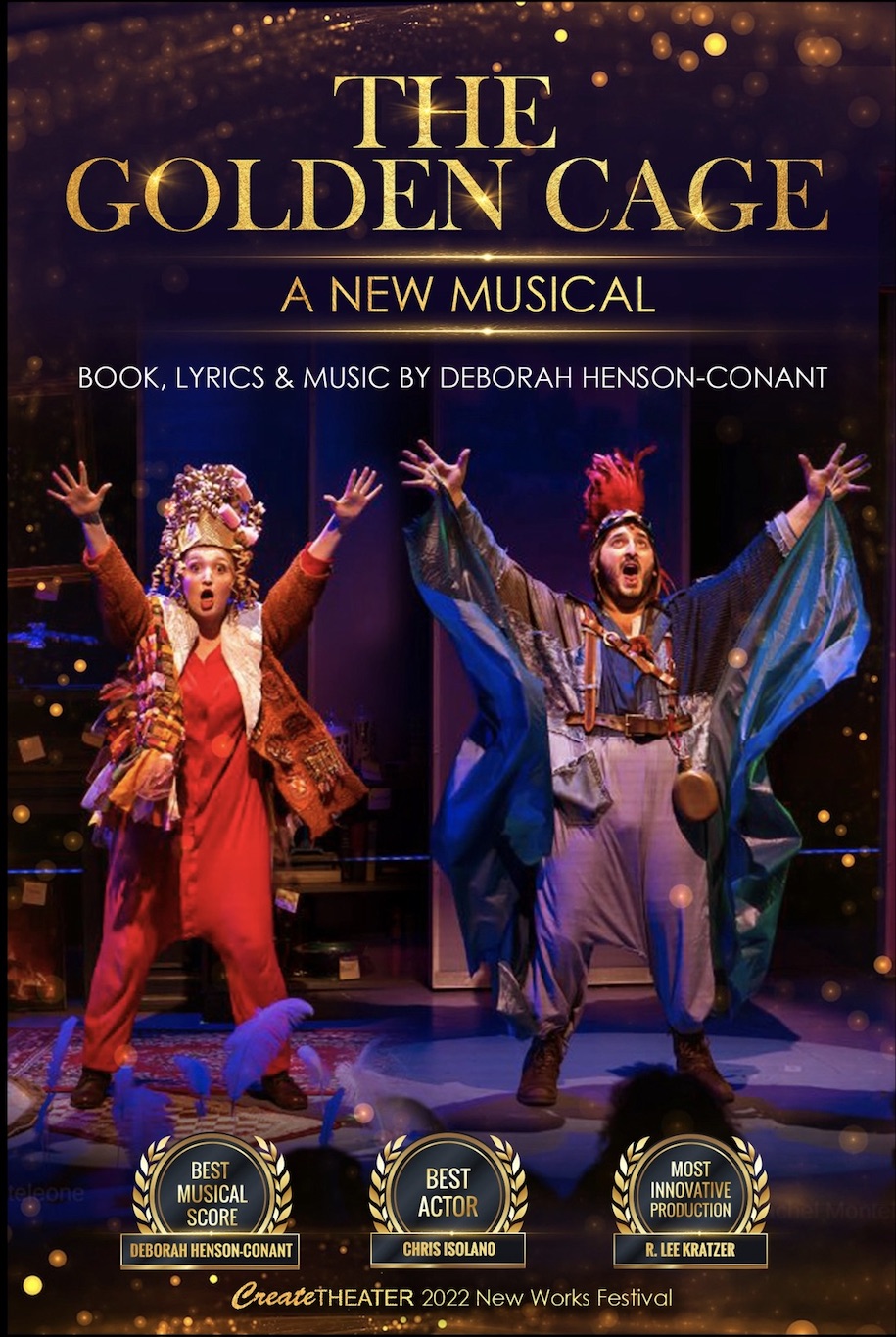
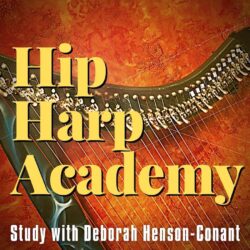

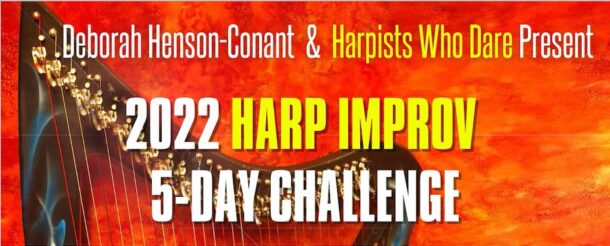
Do harp players get “stuck” in a particular blues pattern like guitar players do? Once the minor pentatonic scale is embedded in the mind and fingers of a guitar player it is temporarily awesome as you get to riff and play along with a lot of famous songs free — for the first time in many cases — from reading music. It opens the door to improvising, within some structure, for non-jazz types. But it quickly becomes a boring trap. No matter what the song, you try to solo from that same scale and the same boxes or patterns on the fingerboard.
I imagine that taking the students from the first class deeper can be a wonderful experience for them and you simply by adding more scales, meters and structure variations. No need to tie it to particular blues styles or artists. Just help them have ways “out of the box” of what they learned in the first course by looking at how and where to insert a different scale or other musical idea. Test their lever or pedal ability with those notes that only work when you pass through them quickly like D-Eb-E in A minor pentatonic — okay, pedaling or levering in and out of that Eb at speed ain’t gonna work but bending, DHC style, might!).
Aim more for Matt Smith “Intermediate Blues Guitar” style than something like Mastering the Blues or Blue Inside Out. I’m not recommending you use his book as it won’t adapt well to the harp but focus on rhythms, techniques and soloing. Minor blues substitutions (ie. min7, min9 and min11 chords) will give them more places to go. Double stop 6ths should come easy to a harp player and sound wonderful (not sure how to slide them on a harp though). Dominant double stops are more fun than being able to tell a Buddy Guy lick from a Freddie King lick. That doesn’t mean a little dose of licks of the masters is a bad thing, but it is better to know how to make your own licks or know enough about the scales and techniques to figure out someone else’s lick that you like. What I like most about this direction is it continues your theme of the freedom that comes from knowing the boundaries or structure.
Another place to take them is comping and things like R&B fills. If they had a blast learning the blues in the first course, what can you do to get them playing together with the structure they learned preventing train wrecks? You compose cool accompaniment for yourself all the time. I don’t know how much of that was in the first course but imagine the satisfaction of the students being able to jam the blues with other musicians, leaving room for each instrument and making it up as they go — within the structure.
Don’t go searching for blues harp songs online though …. you know that will result in sites featuring that other kind of “harp”.
Essentially I am trying to say stay right there on the beauty and power of simple structures and the magic moments of understanding. If the structure represents boundaries of freedom, show them more ways to play within and to bend the boundaries without breaking them, alone and with other musicians.
Every time I read about your blues course, a little part of me wishes I played the harp instead of the guitar! I now know how powerful a teacher that makes it fun and focuses on possibilities, not just formalities can be. I suffered the fate of a typical mass production guitar lesson mill when I was a kid. It took years to recover and learn to like playing again from the music instead of repetition and rules.